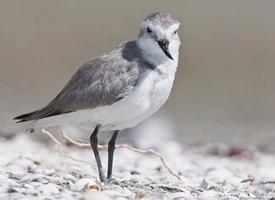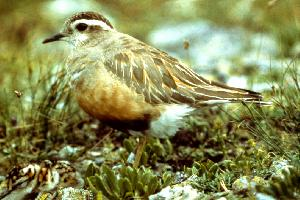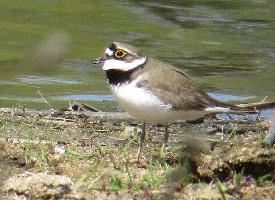
Greutăți și măsuri
| Lungime | de la 28 la 31 cm |
|---|
Descrierea animalului
The Blacksmith Lapwing (Vanellus armatus) is a striking bird species native to the wetlands, riverbanks, and lakeshores of Sub-Saharan Africa. This bird is easily recognizable by its distinctive appearance and the sounds it produces, which are reminiscent of a blacksmith's hammer striking an anvil, hence its name.Physical Description:
The Blacksmith Lapwing measures about 29-31 cm in length, with a wingspan that can reach up to 70 cm. It exhibits a robust body, a relatively short tail, and long, pinkish legs that are well-adapted to its semi-aquatic lifestyle. One of its most remarkable features is its sharp, spurs that are located on the wings, which are used for defense against predators.
The plumage of the Blacksmith Lapwing is predominantly black and white, with a stark contrast that is visually striking. The back and the top of the wings are glossy black, while the underparts are pure white. A notable characteristic is the broad white band that runs across the back of the neck, separating the black cap on the head from the black back. The face features a white forehead and a black band that runs through the eye, extending to the black crown and nape, creating a mask-like effect.
Behavior:
Blacksmith Lapwings are known for their territorial behavior, especially during the breeding season. They are monogamous birds that form strong pair bonds. The pairs vigorously defend their nesting sites against any intruders, including other birds and sometimes even larger mammals. Their call, a loud metallic "klink, klink", is often heard as they vocally challenge intruders and communicate with each other.
Diet:
The diet of the Blacksmith Lapwing primarily consists of insects, aquatic invertebrates, and small fish. They forage by walking and pecking at the ground or water's edge, using their keen eyesight to spot prey. During the breeding season, they may also catch insects in flight to feed their chicks.
Reproduction:
The breeding season of the Blacksmith Lapwing varies depending on the region but generally coincides with the rainy season, when food is abundant. They nest on the ground, typically near water, where they create a simple scrape in the soil to lay their eggs. The clutch usually consists of 2-4 eggs, which are incubated by both parents. The chicks are precocial, meaning they are relatively mature and mobile from the moment of hatching. They are cared for by both parents, who aggressively defend them from potential threats.
Conservation Status:
Currently, the Blacksmith Lapwing is listed as Least Concern by the International Union for Conservation of Nature (IUCN). This status indicates that the species is widespread and abundant across its range. However, like many wetland-dependent species, it faces threats from habitat destruction, pollution, and the draining of wetlands for agriculture. Conservation efforts aimed at preserving wetland habitats are crucial for ensuring the long-term survival of this and many other species that rely on these ecosystems.
In summary, the Blacksmith Lapwing is a fascinating and resilient bird, characterized by its striking plumage, distinctive calls, and aggressive defense of its territory. Its presence is a testament to the rich biodiversity found in Africa's wetland ecosystems, highlighting the importance of conserving these vital habitats for future generations.
Animale similare
Fotografii noi cu animale
Top 10 animale
- Dolphin gull (Leucophaeus scoresbii)
- Diana monkey (Cercopithecus diana)
- Moustached guenon (Cercopithecus cephus)
- Galápagos tortoise (Geochelone nigra complex)
- Japanese macaque (Macaca fuscata)
- Stone loach (Barbatula barbatula)
- Greek tortoise (Testudo graeca)
- Russian tortoise (Testudo horsfieldii)
- Common flying dragon (Draco volans)
- Galápagos penguin (Spheniscus mendiculus)


